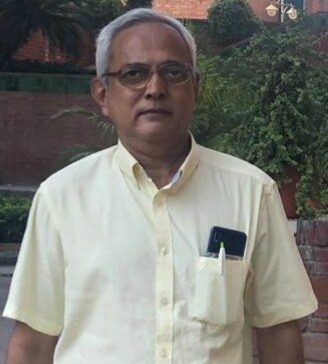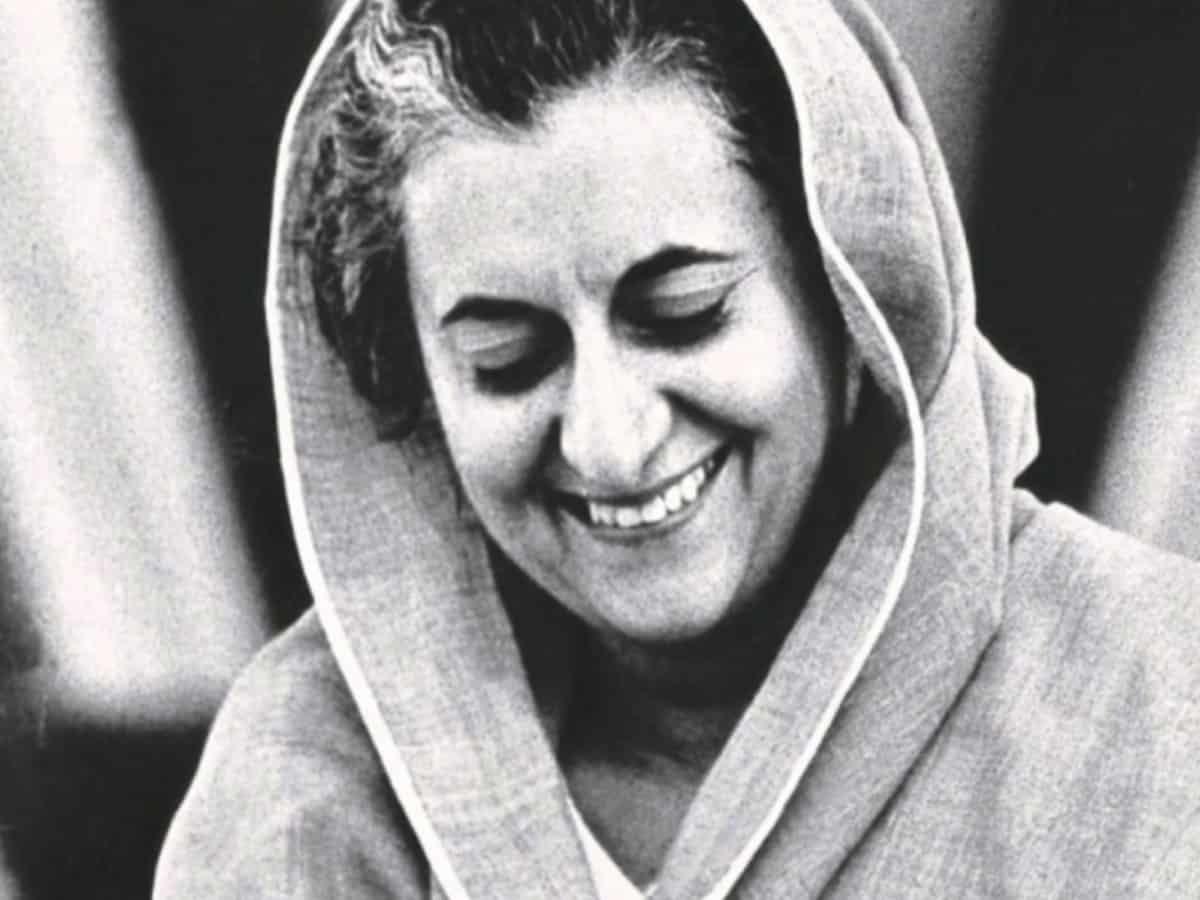
Annually the Emergency Anniversary on June 25-26 has been converted into a political platform by the Indian Right, along with the Left, to derive political mileage by running down Indira Gandhi, easily among the greatest Prime Ministers of India, and tom-tomming their perceived role in what they claim to be the preservation of democracy. This, they do, by being economical with truth; if the full truth is brought out, then they may not know which way to look. Thereby, they try to refurbish an unflattering image and try to acquire a shine that is absent.
Indira Gandhi, for her part, took full moral and political responsibility, as Head of the Government, for the decision to impose Emergency on June 25, 1975, and for all that happened during the period till she relaxed Emergency, release all political defenses and ordered fresh elections on January 18, 1977. She never shirked responsibility, which is the true hallmark of a great leader.
What indeed is lacking is honesty on the part of the Media and the Opposition to set out facts as they are, and not as imagined, in order to present a true picture.
Democrat to the Core
A calculated campaign of calumny, vilification and character-assassination against Indira Gandhi has been mounted, obfuscating facts, for over four decades now on the issue of Emergency. Oblivious to the facts and the ground realities that compelled the hand of Indira Gandhi, there is a concerted and a sustained campaign to paint her in poor light.
It was certainly not some sort of a fancy Movement for Restoration of Democracy led by Nana Deshmukh of the RSS, under the stewardship of RSS-backed Jaya Prakash Narayan that resulted in the lifting of Emergency and ordering of fresh elections in 1977.
It was the personal and political decision of Indira Gandhi that the purpose for which the Emergency was imposed has been served, which was to pull the nation back from the brink and put it back on the rails. That done, there was no justification for its further continuation.
What is more, the elecrions in 1977 have been so free, fair and fearless that globally it established Indira Gandhi’s credentials as a Democrat to the Core.
Indira Gandhi held one of the fairest-ever elections in the country in 1977. With Emergency still in force, indira Gandhi held the freest, fearless and fairest elections, where the Congress was wiped out of the largest Hindi-heartland State of Uttar Pradesh and lost her own parliamentary seat of Rae Bareli in UP. The Congress lost power for the first time at the Centre in 1977, three decades after Independence in 1947.
Smear Campaign
Media and the Opposition created ghosts, for example, of forced sterilizations on youth.
I still remember the whisper campaign by word of mouth of a popular story of youth, who, when a widow boarded a bus, told someone to vacate his seat for Indira Gandhi (reference to a widow) and suddenly plainclothesmen caught him by the collar from behind and dragged him away from a running bus and performed family planning operation.
Where, when, who, what? There was no substantiating of facts. Purpose was served, of raising a spectre of fear ibn the minds of the people through rumour-mongering.
Modern Bread was a popular brand and rumour-mills had it that family planning medicine was mixed in it, which sterilization!
None of the 33 Commissions of Inquiry neither established nor action taken by the Janata Party Government that came to power in 1977.
Result was that the Family Planning Programme suffered a serious setback for all time to come. India was the first country to take up Family Planning Programme, as early as in 1952, owing to the pioneering efforts of Dhanwantri Rama Rau. Initially, it started as birth control, but Indira Gandhi expanded the ambit to cover mother-child health, nutrition and family welfare. Indira Gandhi felt that unless Family Planning succeeds, it is difficult to uphold the right to education, right to nutrition and right to healthy life.
Relook Facts
With close to half-a-century since the Imposition of Emergency, it is about time to revisit, review and reassess Emergency.
It is time for critics and historians to relook the facts and the ground realities existing at the time of the Declaration of Emergency and not how the Media and the Opposition would like to imagine them to be.
Media and the Opposition paint Indira Gandhi as a crafty despot, out to entrench herself in power by doing away with democracy and democratic freedom. Now this is something so far removed from political reality.
Soon after the Declaration of Emergency on June 25, 1975, Indira Gandhi, in an interview, told M Shamim of The Times of India on July 3, 1975, “Those whose ideology is violence and disruption cannot be democratic. For them to take the name of democracy is like the teenager, who killed his parents, but pleaded for mercy on the ground that he was an orphan.”
Parties, not wholly committed to democracy, exploited democratic freedom only to further their sinister and nefarious designs, under the garb of Saving Democracy.
Only smugglers, anti-social and anti-national elements were put behind the bars, apart from political leaders associated with diabolical brand of politics. Teachers and students were not touched, except those linked with Naxalite and other extremist movements.
There were three Opposition-ruled States during the Emergency. Parliament was functioning. Opposition leaders were vocal on floor of Parliament, bitterly attacking the Government.
If Indira Gandhi was indeed a tyrant that she was made to be, then such freedom would not have been allowed and that too in Emergency!
What really happened during the Emergency was an extraordinary situation that needed extraordinary response. Emergency was just a Bitter Pill administered to treat a deep-rooted malaise. Emergency was lifted the moment signs of normalcy were discernible.
In her broadcast to the nation on January 18, 1977, Indira Gandhi said, “Anyone can see that the nation is more healthy, efficient and dynamic than it had been for a very long time. The question before us is how to restore substantively those political processes on which we were compelled to impose some curbs.”
She went on to state, “Legally, the present Lok Sabha can continue for another 15 months. But we also strongly believe that Parliament and Government must report back to the people and seek sanction from them to carry out the programmes and policies for the nation’s strength and welfare. Because of this unshakable faith in the Power of the People, I have advised the President to dissolve the present Lok Sabha and order fresh elections. This, he has accepted. We expect polling to take place in March.”
Kaali Topi Laal Rumaal
There is a Hindi film made in 1959, Kaali Topi Laal Rumaal (Black Cap, Red Scarf). It symbolically sums up the coming together of the Indian Right and the Left: the Black Cap of the RSS and the Red Scarf of the Left, Kaali Topi Laal Rumaal!
It is a very old association. The Indian Right and Left sided with the British and opposed the Quit India Movement launched by the Father of the Nation, Mahatma Gandhi, on August 9, 1942. It was the final, decisive battle for Indian Independence that was attained on August 15, 1947, but the Indian Right and the Left opposed it.
This Right-Left camaraderie persisted through the Great Churning during the General Election in 1967, when the Right and the Left joined hands to form Samyukth Vidhayak Dal (SVD) Governments in States like Bihar and Uttar Pradesh. It continued through the Emergency and during the formation of Janata Party Government at Centre in 1977. Again, they came together during the formation and running of the V P Singh Government in 1989, known as BJP-Left Front-backed National Front Government.
Clinging to Emergency
The Congress has a great pivotal and a pioneering role in the Indian Freedom Struggle. Later, the Congress was in the vanguard of the national political and economic development and the social transformation.
The Right and the Left do not have matching role, which dwarfs them in the shadow of the Congress. Unable to represent any major political movement, the Indian Right and the Left try
to showcase Emergency as some sort of a Movement for Restoration of Democracy in India.
Now, this is a claim that is far removed from political reality. If Indira Gandhi had imposed Emergency on June 25, 1975, she alone is responsible for her decision for relaxation of Emergency and ordering of fresh elections on January 18, 1977, thus reasserting the Congress and the Country’s abiding commitment to democracy, which was given to the country by the Congress.
Why Emergency?
Trouble started for Indira Gandhi in 1971, soon after her spectacular election victory. She did not even savour the sweeping electoral win, when waves of influxes of Bangladeshi Refugees started pouring into India, imposing heavy economic and administrative burden on India. In 1973, the international oil crisis impacted Indian economy. In 1974 was the Railway strike, which disrupted national life.
The Opposition formed the Grand Alliance calculated to defeat Indira Gandhi, but failed. It was then that the Opposition gang up chose to resort to a no-holds-barred attack against Indira Gandhi. There was a dry-run in Bihar and Gujarat during the Nav Nirman Movement when duly, democratically-elected Governments were toppled through intimidation and coercion of MLAs, who were threatened and forced to resign.
Dastardly killing of Union Railway Minister L N Mishra and murderous attempt on the life of Chief Justice of India A N Ray and converting educational institutions into hotbeds of political intrigue were part of the pattern of the Opposition strategy to destabilize the Central Government.
On June 12, 1975, the Allahabad High Court judgment unseating Indira Gandhi came as a handle for a desperate Opposition.
The judgment, itself, did not pose any problems for Indira Gandhi. Justice Jagmohan Lal Sinha, who delivered the verdict unseating Indira Gandhi, himself put his verdict in abeyance for two weeks, to enable Indira Gandhi to appeal to the Supreme Court. The Apex Court granted Stay and finally upheld Indira Gandhi appeal. The 39th Constitution Amendment, providing for protection against frivolous litigation against the election of the President, Vice- President, Prime Minister and Lok Sabha Speaker, was also upheld by the Supreme Court.
On the evening of June 25, 1975, Jaya Prakash Narayan unveiled the plot to launch an Agitation from June 29, 1975, to lay siege to Prime Minister’s residence and Parliament to paralyze Government functioning and disrupt national life.
Jaya Prakash Narayan went to the extent of inciting the Armed Forces to mutiny and Police to revolt. It is a different matter that the Indian Armed Forces and Police are disciplined and deeply patriotic and will not be taken in by such incitement. But that does take away from the seriousness of the diabolical plot hatched by the Opposition.
Emergency was imposed against the backdrop of a looming crisis of a diabolical plot to destabilize the Government and actively work to overthrow it. Now, this really fits the classical definition of Sedition.
No Government worth its salt can allow overthrow of a democratically-elected Government and thus allowing anarchy to succeed. Paramount duty of the Prime Minister is to uphold the Constitution and the Rule of Law.
For the Opposition, this certainly was not the democratic way forward. The best course open to the Opposition was to mobilize public opinion in its favour, create a conducive climate and wait for the General Election that was just about 8 months away, as the elections were due in March, 1976. What the Opposition did, instead, was to precipitate matters, pushing the nation to the brink.
Venkat Parsa is a senior journalist and writer based in New Delhi.
Views expressed are personal

